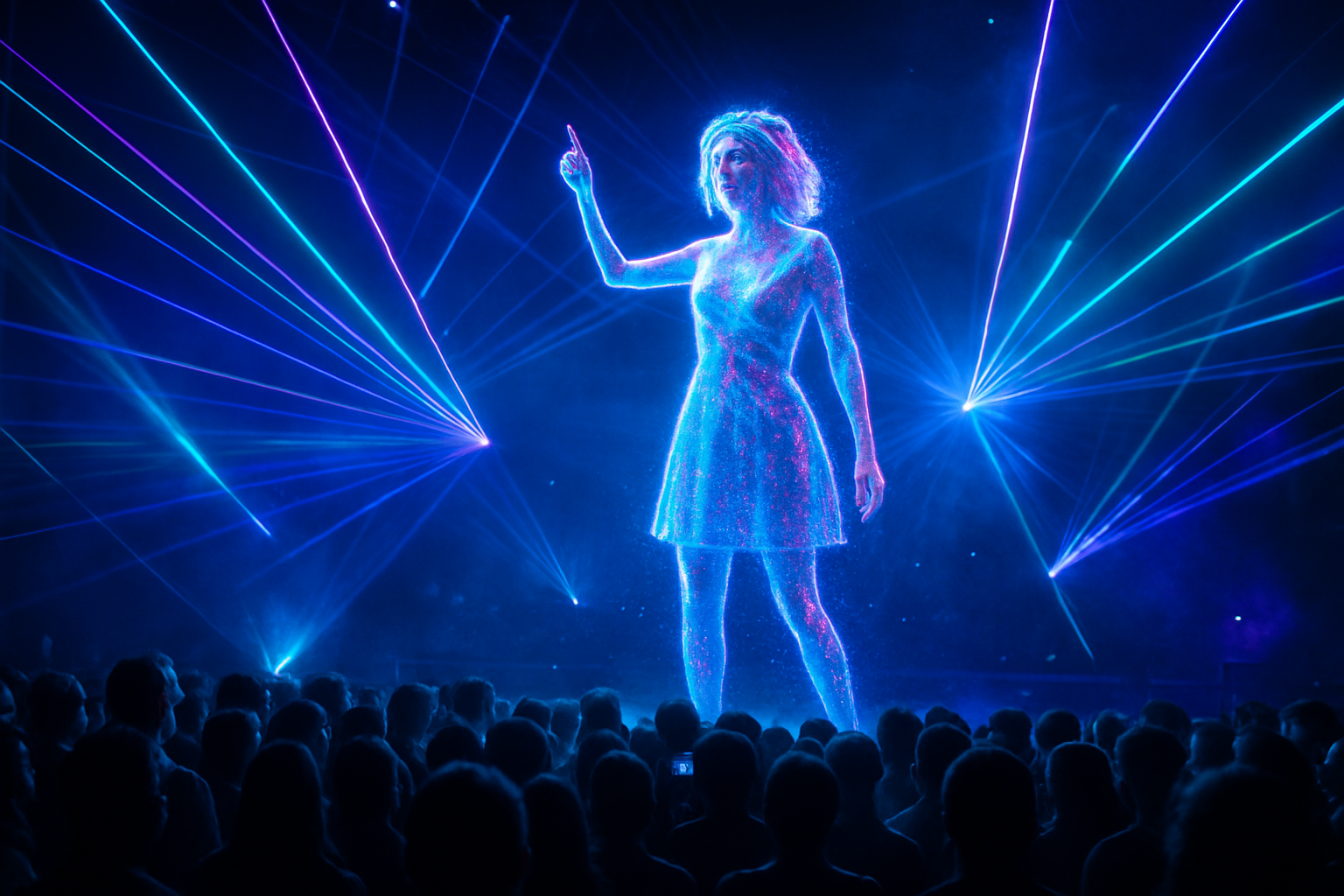Holographic Busking: Street Performance in the Digital Age
In the bustling streets of metropolitan cities, a new form of artistic expression is emerging, blending cutting-edge technology with age-old traditions of street performance. Holographic busking, a phenomenon that marries digital projections with live entertainment, is captivating audiences and challenging our perceptions of public art. This innovative approach to street performance is not only reshaping urban landscapes but also redefining the relationship between artists, technology, and spectators in the digital age.

Technological Foundations
At the heart of holographic busking lies a complex array of technologies. High-powered projectors, motion sensors, and sophisticated software work in tandem to create the illusion of three-dimensional figures and objects in public spaces. These systems often incorporate real-time rendering capabilities, allowing performers to interact with their digital counterparts seamlessly.
The Artistic Palette of Digital Buskers
Holographic busking has opened up a new realm of possibilities for street performers. Musicians can now collaborate with virtual band members, dancers can partner with ethereal figures, and magicians can conjure seemingly impossible illusions. The digital nature of these performances allows for rapid transitions between scenes and characters, enabling artists to create elaborate narratives within the confines of a sidewalk or plaza.
Cultural Impact and Reception
The emergence of holographic busking has not been without controversy. While many celebrate it as an innovative fusion of art and technology, others argue that it detracts from the raw, unmediated nature of traditional street performance. City officials have grappled with how to regulate these displays, balancing concerns about public safety and distraction with the desire to foster creative expression in urban environments.
Economic Implications for Artists
Holographic busking presents both opportunities and challenges for street performers. On one hand, the spectacle of these high-tech displays can draw larger crowds and potentially increase earnings. However, the equipment required for such performances can be prohibitively expensive, creating a barrier to entry for many artists. Some performers have turned to crowdfunding and sponsorships to finance their digital setups, while others have formed collectives to share resources.
The Future of Urban Entertainment
As holographic technology continues to evolve, the potential for even more immersive and interactive street performances grows. Some futurists envision entire city blocks transformed into canvas for digital artists, with buildings serving as projection surfaces for massive, collaborative displays. The line between performer and audience may blur further, with spectators able to interact with holographic elements using their smartphones or augmented reality glasses.
Preserving the Human Element
Despite the technological marvels of holographic busking, many performers and critics stress the importance of maintaining the human connection that has long been the hallmark of street performance. The most successful holographic buskers are those who use technology to enhance, rather than replace, their own talents and charisma. The warmth of a smile, the energy of a live voice, and the unpredictability of human interaction remain crucial elements in the art of street performance.





